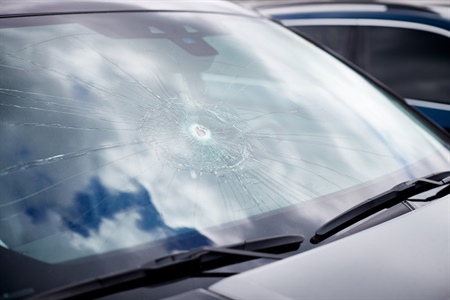What Are the Common Causes of Auto Glass Damage?

Every day, vehicles face a barrage of threats that compromise windshield integrity, from high-speed traffic flicking stones to sudden gusts that drive debris against the glass. Without robust protection, even a minor pebble can initiate a chip that radiates into a full crack.
Insights from Glasswerks in St. Cloud highlight the critical patterns that lead to auto glass failure, underscoring why consistent care and attention matter.
In this guide, we explore five key aspects: how road debris impacts glass strength, the role of weather fluctuations in wear and tear, seasonal factors that heighten vulnerability, proven preventive measures, and practical strategies to avoid common sources of windshield damage.
Whether you’re researching auto glass repair options or aiming to preserve your windshield’s clarity, these sub-topics will equip you with expert knowledge before diving into detailed solutions.
Impact of Road Debris on Windshield Integrity
The highway environment exposes windshields to loose stones, gravel, and other debris that chip the glass surface on impact. When a small rock strikes at high speed, it transfers its kinetic energy to the glass, creating microfractures. Over time, those tiny fractures grow under normal driving or thermal stress, turning minor chips into long cracks.
The glass composition in modern windshields combines layers of laminated safety glass, but even that protection only limits glass shattering—it does not prevent chip formation. Once a chip appears, moisture and dirt can enter the fracture lines, weakening the bond between layers and making the damage prone to spreading under vibrational stress.
Early attention to chips through professional auto glass repair can halt crack propagation by injecting ultraviolet-cured resin into the damaged zone to restore structural integrity and clear visibility.
Weather-Driven Stressors Affecting Auto Glass
Temperature fluctuations subject windshields to thermal stress as the glass expands and contracts throughout the day. In cold climates, rapid warm-up from a defroster can create uneven heating, causing pre-existing chips to develop into long cracks. Direct sunlight on a frosty surface has a similar effect, amplifying internal stress.
Hailstorms and heavy rain also play a role: hail strikes deliver forceful impacts that dent or fracture glass, while rainwater seeps into tiny surface imperfections. When that water freezes in cold weather, it widens cracks from the inside out.
Even UV exposure degrades the plastic interlayer over time, reducing the windshield’s resistance to impact.
Review our guide on winter auto glass protection for practical advice on reducing weather-related wear and avoiding costly repairs.
Seasonal Conditions That Heighten Auto Glass Vulnerability
Each season brings distinct challenges for auto glass. Spring thaw can leave potholes full of water and debris, increasing the chance of stone chips. Summer heat subjects glass to prolonged UV exposure, which degrades the interlayer and makes the windshield more brittle.
Fall introduces leaf litter and sand on the roads, both of which can accelerate wear. In winter, road salt and sand used for traction can chip the windshield when vehicles release or flick particles at each other. Rapid freeze-thaw cycles then amplify any small crack, turning it into a larger fracture.
Drivers should remain aware of these seasonal risk factors and inspect their windshields regularly for damage that could spread under extreme conditions.
Preventive Measures to Safeguard Auto Glass
Maintaining a safe following distance reduces the risk of road debris impact. A buffer of at least three car lengths gives you time to react to loose stones kicked up by other vehicles. When possible, steer clear of construction zones and unpaved roads where loose gravel is common.
Park in shaded or sheltered areas to limit UV exposure and temperature extremes. Using a windshield sun shade and applying a clear protective film can help minimize micro-abrasions from windborne dust. Regular cleaning with a soft microfiber cloth prevents dirt from scratching the glass during wipe cycles.
Inspect windshield wipers and replace them at least once a year to avoid streaking that obscures visibility and causes the wiper blades to drag dirt across the glass surface.
Strategies to Avoid Common Windshield Damage Sources
Avoid parking under trees during windy days to prevent falling branches and sap drips that can etch or crack your glass. Secure loose items in your vehicle and roof racks to stop them from flying off and striking your windshield.
When clearing snow and ice, use a plastic scraper designed for auto glass. Metal tools and frozen ice left on the windshield can easily chip at the edges of thinned glass near the laminate bond. Slowly warm the windshield by running the defroster at low speed before scraping to minimize thermal stress.
For expert advice and to schedule a professional inspection, visit Glasswerks to learn how to avoid costly windshield damage.
How Glasswerks Can Help Protect Your Auto Glass
Glasswerks combines expert technicians and state-of-the-art repair methods to address damage from debris impacts, weather stressors, and seasonal hazards. Whether you need a chip repair or full windshield replacement, our team restores glass integrity with precision.
Glasswerks offers mobile service for on-site repairs and ADAS recalibration to keep safety systems aligned. Call us at 320-203-7777 or contact us to schedule service and protect your vehicle’s visibility and safety.